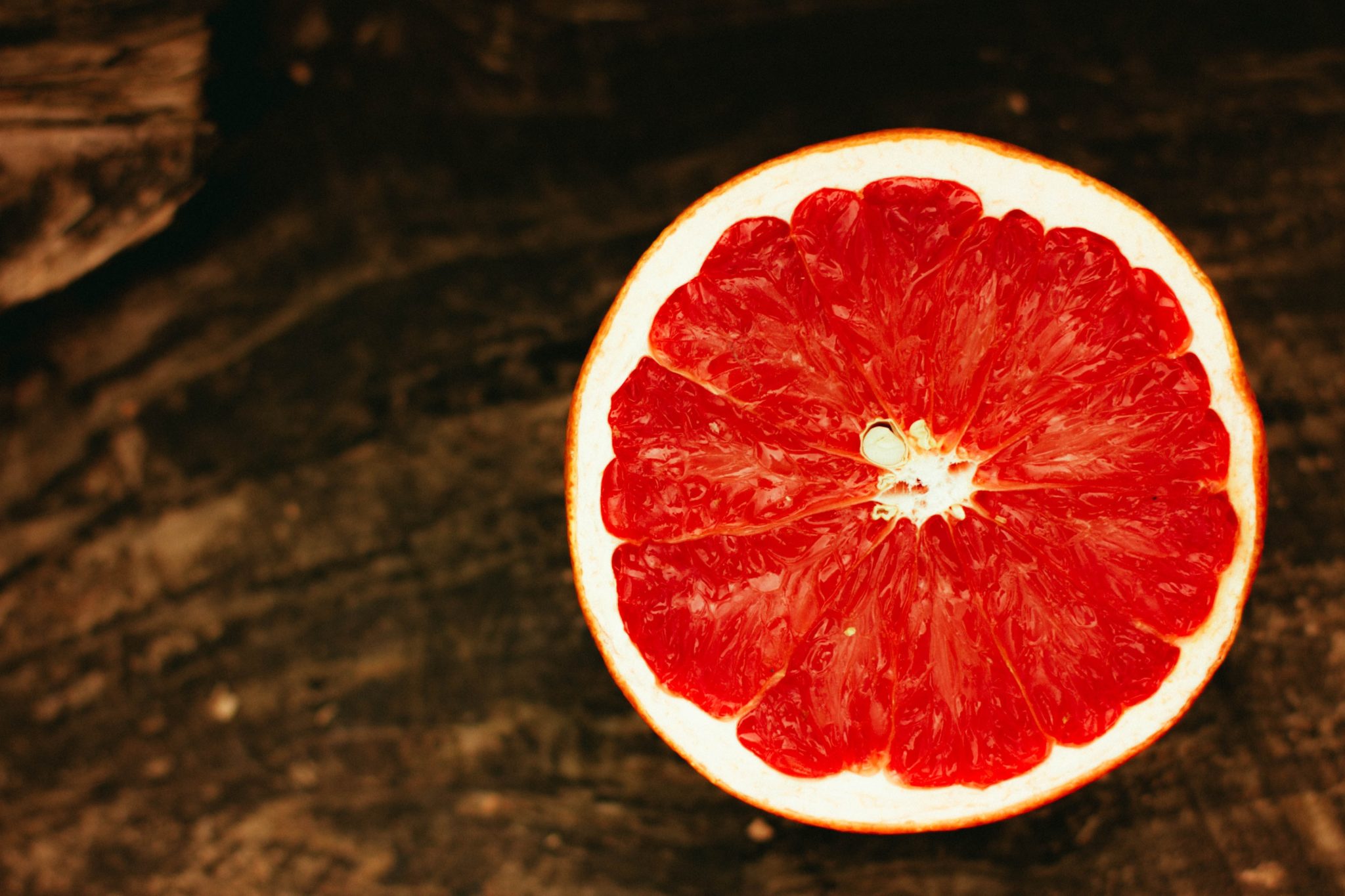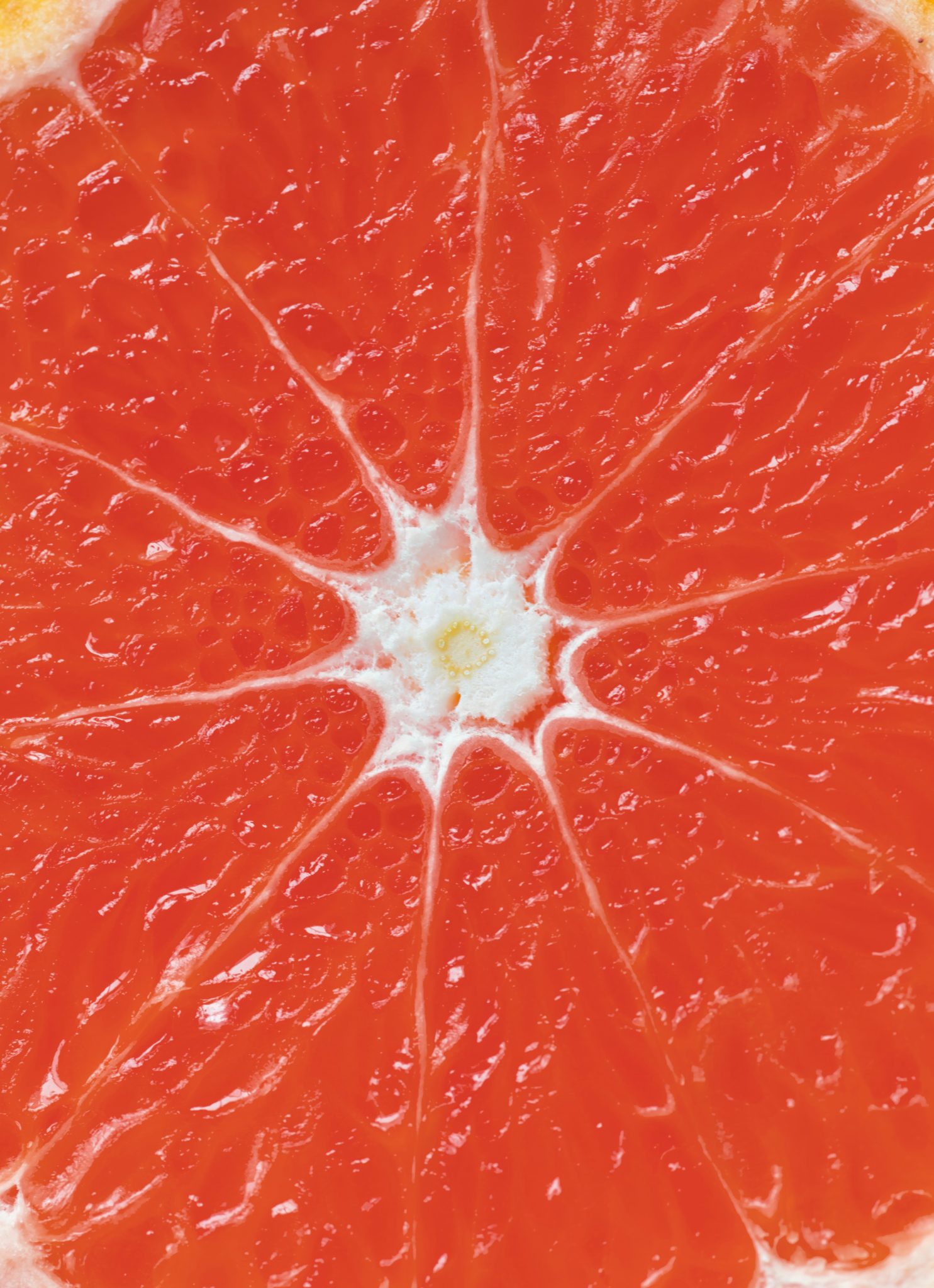Grapefruit is the only citrus strain to originate in America and is a result of cross-pollination between the pomelo and the sweet orange. Texas only produces red grapefruit varieties, the Ruby-Sweet and Rio Star. Fun Fact: Grapefruit is the State Fruit of Texas!

Production
Grapefruit is a citrus fruit that grows on trees. The fruit grows in clusters similar to grapes, which is why it is called the grapefruit. The fruit is tree-ripened and hand-picked, which increases quality. Grapefruits make up nearly 80% of the citrus industry and Texas.
Because of the low fruit production and disease, grapefruit is not usually grown from the the seeds. Methods such as budding or grafting the grapefruit variety onto the root system of a native citrus plant.
Grafting and budding are techniques used to join parts from two or more plants so that they grow as a single plant.
In grafting, the upper part of one plant grown on the root system of another plant.
In budding, a bud is taken from one plant and grown on another plant.
Nurseries are used to grow young grapefruit trees and then they are transplanted into orchards to mature and produce fruit. Trees are usually 3 years old before they produce large amounts of fruit. A ten-year-old tree may produce 250 pounds of fruit!
Trees are evergreen and produce flowers or blooms in the spring. After the flowers fall from the tree, the fruit begins to develop. In Texas, grapefruit matures in late October and can be picked. The longer the fruit remains on the tree, the larger and sweeter it becomes.

Basic Parts of the Grapefruit Tree
- Roots – The portion of the tree that is below the ground and gathers water and nutrients for the tree
- Trunk – The base of the tree which allows for the transport of water and nutrients to reach the blossom and fruit
- Leaves – Leaves produce all of the necessary food and vitamins needed through photosynthesis. The leaves use carbon dioxide, water, and sunlight to make sugars which serve as the plant’s food.
- Blossoms – The flowers are responsible for pollen and seeds. After pollination, cells inside the flower begin to divide and produce fruit and seeds. This is called fertilization.
- Fruit – The fruit contains the seeds which are critical for seed planting.

Basic Parts of the Grapefruit
- Flavedo – The outside peel, which is often “zested” and used for its’ flavor characteristics in dishes.
- Albedo – The white layer between the peel and the fruit which has a bitter flavor.
- Membrane – The sack that divides the fruit segments.
- Endocarp – This is the actual fruit you eat.
- Seed – The next generation of new trees.

By-Products
Grapefruits have many uses and there are many ways to eat them!
- Grapefruit juice can be extracted and chilled or frozen.
- Grapefruit sections can be used in salads and salsas.
- Grapefruit peel is candied and is an important source of pectin for the preservation of other fruits
- Peel oil: Grapefruit peel oil is commonly enjoyed in soft-drink flavoring
- Grapefruit packing plant waste: the waste from grapefruit packing plants has long been converted into molasses for cattle
- Seed hulls: After oil extraction, the hulls can be used for soil conditioning, or combined with the dried pulp, as cattle feed

Health and Nutrition
Grapefruit is a citrus fruit, which means that it is high in Vitamins A and C. Half of a grapefruit can provide 70% of the daily recommended amount of Vitamin C.
Grapefruits are also fat, sodium, and cholesterol free which makes them a great addition to your diet.
Grapefruits can be eaten fresh, frozen, or even canned. They can be used in salads and salsa, and grapefruits can make a great after-school snack.
The USDA MyPlate recommends that we consume 2 cups a day of fruit. One-half of a grapefruit would count as half a cup of fruit, or one serving. Many think grapefruit is sour, but it is rich in nutrition and has a great impact on Texas agriculture!

References
Sauls, J.W. (1998). Home Fruit Production-Grapefruit. Retrieved on 6/23/2017 from: http://aggie- horticulture.tamu. edu/citrus/grapefruit.htm
Texas Sweet Citrus Marketing Inc. (n.d.). Texas citrus learning center. Retrieved from http:// www.texasweet.com/ texas-citrus-learning-center/
United States Department of Agriculture. (2012). Household USDA Foods Fact Sheet: Grapefruit, Fresh. Re- trieved on 6/22/2017 from: https://whatscooking.fns.usda.gov/sites/default/files/factsheets/ HHFS_GRAPEFRUIT_ FRESH_December2012.pdf

